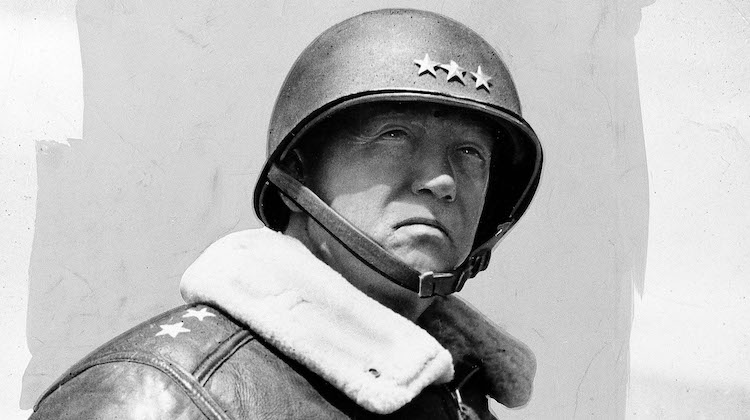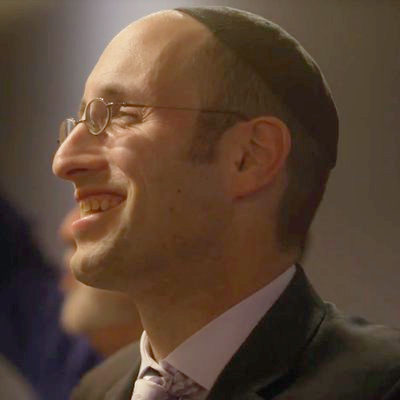Patton’s Poem and the Jews
A poem by General George S. Patton is an encapsulation of what it means to be a Jew.

Patton is one of the great American films, featuring George C. Scott as the brilliant, flawed, and exceedingly idiosyncratic general who believed in reincarnation and insisted he had himself been present at all of the great battles in human history. Toward the beginning of the film, Patton is driving with another general, Omar Bradley, in the Morocco desert, when he spies a battle site from the Punic Wars. He insists that they pull over, and the very modern general is suddenly transported to a scene two millennia earlier. He says to Bradley: “It was here. The battlefield was here. The Carthaginians defending the city were attacked by three Roman Legions. The Carthaginians were proud and brave, but they couldn’t hold. Two thousand years ago. I was here.”
The point is to stress the strangeness of a man who personally identifies with a battle that took place nearly two dozen centuries earlier. Patton had himself written some terrible things about the Jewish people; but for Jews, this scene in particular should not be that odd. We remember, commemorate, and mourn moments that took place in the ancient past, some of them intimately involving defeats at the hands of the very same Romans themselves.
This was brought home to me over the past few months, as I have been teaching a seminar on Josephus’s The Jewish War at Yeshiva University’s Stern College for Women. Josephus’s history chronicles the Jewish rebellion against Rome that broke out in 66 C.E., which concluded with the Romans burning Jerusalem and its Temple, in the year 70. The seminar is conducted in an old-fashioned way. Laptops are prohibited, and the text is studied in print, with members of the class taking turns reading from it aloud. The English translation, composed in the 19th century, contains phrases that students have rarely seen, such as descriptions of troops that “sally” forth from the city; this lends a greater feeling of antiquity to the subject.
But not only antiquity. The course is one of many offered by Yeshiva’s Straus Center for Torah and Western Thought, which focuses on the great works of Judaism and the West, and which includes Aristotle and other classical works in its curriculum. Yet this course is different, for its subject is simultaneously ancient and intimate.
If one were to teach a seminar to American students on the Punic or Peloponnesian Wars, one would have to describe a geography utterly unfamiliar to the students. But these young women are entirely aware of the sites being discussed. If I describe where a specific battle around Jerusalem took place, I merely refer to a current location in the Old City, where these students have been many times. Similarly, when the rest of the Holy Land is described, they have a sense of the layout of the land. If we read of a journey by Titus’s troops from Caesarea to Jerusalem, it is a trip many have taken themselves. If we learn of Vespasian beginning the war in the Galilee and then proceeding south, we are following a journey toward the center of the country that they have all experienced. The students can, in other words, read of battle sites in an ancient text and say of those sites Patton’s words: I was there.
This intimacy makes the material more emotionally affecting, bridging past and present. The story would, of course, be depressing at any time; Josephus describes both the internecine conflict that plagued Jerusalem within, and the havoc wrought on Jews by the siege that Titus established without. But our engagement of the text has taken on a particular pertinence, I think, by the terrible parallels in our own news in the past months. To read of Romans rampaging through Jewish streets, murdering men and women, is to be reminded of Jews murdered in the same way in the past year. Descriptions of piles of Jewish corpses, of the torture of Jews at the hands of the enemy, have dreadful relevance.
The students further perceive, hovering over the text, an impending sense of doom. In synagogue, they have mourned, every year, the ancient events that Josephus describes. I wryly remarked to students, who have told me that they share what they are learning with their families around the Shabbat table, that the material they present every week is progressively more depressing. We all know how the story ends.
But do we? One of the lessons I seek to impart to my students is that the despairing way in which The Jewish War comes to a close is not the end of the story. And I do so by references to modern Jewish history as we study this ancient Jewish text. As we learn of Titus’s siege of the sacred city, which began on Passover in 70 C.E., I note that Arab forces attempted a similar siege of Jewish Jerusalem in 1948—and that right before Passover, the siege was briefly broken, thus allowing Jewish Jerusalem to sustain itself and survive.
As we learn of how Titus encamps in the areas of Mount Scopus and the Mount of Olives, I note that it was there that the Israeli officer Motta Gur sat with his soldiers in 1967 as he prepared to enter the Old City and restore Jewish sovereignty for the first time in thousands of years. This story is, in fact, anything but over. Carthaginians are not reading today of a defeat by Ancient Rome. But Jews study the story of the terrible destruction wrought by an empire now long gone, and they know that the Jerusalem razed by Titus is Jewish, and sovereign, once again.
Few Jewish texts are as depressing as Josephus’s The Jewish War;but placed in the proper context, few historical texts are as inspiring. In Patton, as the eponymous character describes his personal presence at the ancient battle, he notices that Bradley is looking amusedly at him.
“You don’t believe me, do you, Brad?” Scott’s Patton says. “You know what the poet said:
‘Through the travail of ages,
Midst the pomp and toils of war,
Have I fought and strove and perished
Countless times upon a star.
As if through a glass, and darkly
The age-old strife I see—
Where I fought in many guises, many names—
but always me.’”
And then Patton says to Bradley: “Do you know who the poet was? Me.”
This was indeed a poem by Patton. Once again, the scene (written by Francis Ford Coppola) is set up to stress Patton’s idiosyncrasy; but to a Jewish professor like me, the poem is an encapsulation of what it means to be a Jew.
Not through personal reincarnation, but as a people, the Jews did endure “the travail of ages.” But no other people has endured the “pomp and toils of war” in the same way, reestablishing sovereignty in the very same site where their ancestors died thousands of years before. It is a strange but a stirring experience to study The Jewish War while a war against evil is being waged by Jews, a reminder of the story of a people that has fought, and striven, and never perished in the past—and isn’t going anywhere.
This essay was originally published in Commentary.
A poem by General George S. Patton is an encapsulation of what it means to be a Jew.
A poem by General George S. Patton is an encapsulation of what it means to be a Jew.

